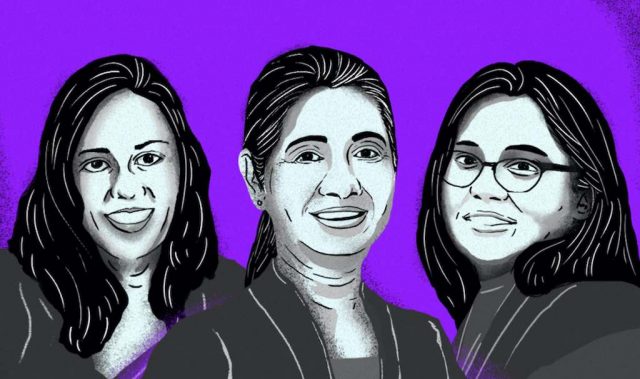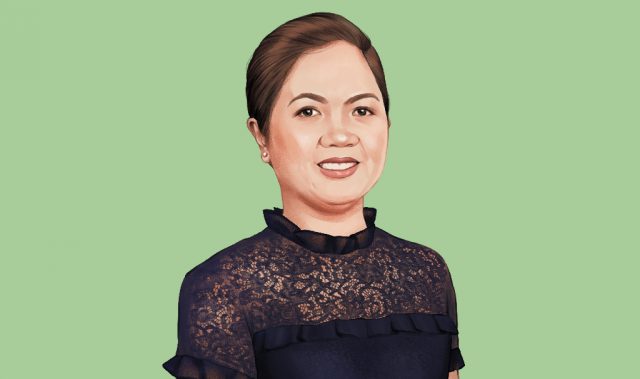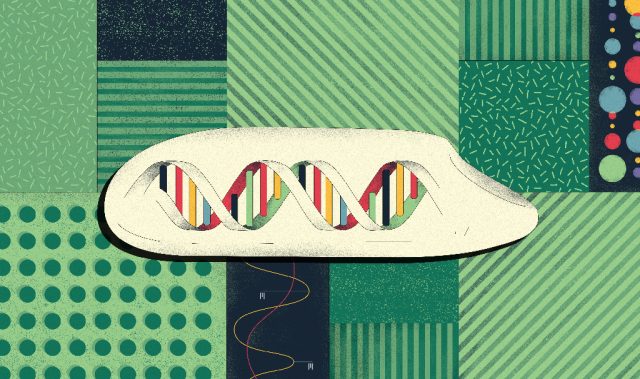
AsianScientist (Jul. 4, 2011) – Leopold Ilag is an intriguing person to talk to. A Filipino scientist who earned his PhD in Medical Biochemistry and Biophysics from the Nobel Prize-awarding Karolinska Institute in Sweden, Dr. Ilag is also someone who is in touch with his spirituality.
![]()
During the course of my undergraduate studies at Cambridge University, I’ve had the pleasure of being acquainted with Dr. Leopold Ilag – then a research associate in the Chemistry Department working on mass spectrometry of macromolecular complexes and membrane proteins. Through his perseverance, this unassumingly serene and yet highly inquisitive individual is now Associate Professor and the Director of the Proteomics Facility at Stockholm University.
Dr. Ilag’s busy schedule notwithstanding, he believes in giving thanks to the country that raised him. Dr. Ilag has lectured on his research at the University of Philippines Los Baños, as part of the Balik Scientist Program of the Department of Science and Technology (DOST).
In a chat with Asian Scientist Magazine, Dr. Ilag shared with us how a flower came to be named after his family, his views on R&D in the Philippines, and how he thinks about philosophy, science and religion.
Prof. Ilag, you have a PhD in molecular neurobiology, medical biochemistry and biophysics. What inspired you to study science, and who are your role models during your studies and career?
I grew up in an academic community and an academic family of natural scientists so I guess science has always been around me. Although we were not raised to be scientists, the rational/logical and creative way of thinking was a given in the environment I grew up in.
Having said that, I never thought of becoming an academic scientist. Up until the early part of university, I did not think I was creative enough to be a scientist. However, my mom who was a professor in plant pathology reassured me that creativity comes with time.
I remember one day when I was in the library and asked my oldest brother who was on holiday then (he had or was finishing his PhD in immunology/virology), what field I should pursue in order to understand most if not all of the natural science journals we were standing in front of. He said, biochemistry, that made me think it was what I wanted to pursue. At that time I personally had interests in neuroscience and even clinical psychology.
As for role models I would say it was more my family.
As the Director of the proteomics facility and Associate Professor of analytical chemistry at Stockholm University, you are at the forefront in the field of proteomics, e.g. mass-spectrometry (MS) and 2D-gel analysis being two examples. Where do you think the field of proteomics is heading, and what breakthroughs do you hope to achieve and witness in your lifetime?
Although I am director of the proteomics facility, it is not my only interest. I see proteomics as a subset of the wider area of systems biology. Personally I am not the shotgun type of scientist. My specific interests are in membrane protein biochemistry, structural biology, and bioanalytical chemistry in general. Beyond the science I personally pursue, I am also keen on other subjects I try to keep track of.
Breakthroughs in my lifetime? I would be happy to see the reality of quantum biochemistry; I remember reading a book on this as a PhD student. It is something we shall perhaps see in our understanding of photosynthesis or some aspect of neuronal signaling, who knows.
I recently had a conversation with a friend who told me about apparent quantum tunneling in enzyme systems. In structural biology there have been efforts to do x-ray diffraction of single molecules – extending that to molecular machines would also be a remarkable achievement.
You have taught in Cambridge University, Stockholm University and at the University of Philippines Los Baños (UPLB). Could you discuss the different teaching styles of these three very different institutions?
I only formally taught for one semester in UPLB right after graduation but had several guest lectures and was at some point adjunct faculty. In Cambridge, I only taught as a temporary tutor in chemical biology and worked with graduate students. In Stockholm, I have been involved in teaching bioanlaytical chemistry for the past six years.
I think one major difference is the experience of teachers, i.e. most of those who teach in Europe are active scientists often practicing at the cutting-edge of their fields, whereas in UP they are more of classroom pedagogues with limited international level research experience.
This is an understandable reality which nevertheless needs to be improved. Everyone can’t be at the cutting edge of science, but active practice of creative research is essential, there are locally important science that can be done.
There are also some differences in the structure of teaching: the tutorial system is special and I personally would have enjoyed such a method, but the system in UP which is more similar to the US system has the advantage of allowing for a broader education. In Sweden, the style is also slightly different in that it is more intensive and focused, and graduate studies rely heavily on publishing.
Because I finished the four-year university (UPLB) course in three years, I was able to attend additional courses in mechanistic organic chemistry and quantum mechanics. I believe this enabled me to move fluidly from genetics through to biochemistry and neuroscience all the way to analytical chemistry which I am involved with now.
You are a religious person, and also a serious scientist. How do you reconcile science & religion in your daily life?
I would say the question is a bit misleading because there is the presumption that there is an inherent incompatibility between science and faith.
Gregor Mendel, the father of Genetics, was an Austrian Augustinian monk; Georges Lemaitre, the initial proponent of what is now known as the Big Bang theory, was a Belgian catholic priest; and there are other men of faith in science such as Boyle, Copernicus, Kepler and Galileo. The latter is perhaps the most controversial among such people; however, this matter is easily understood when the right context is taken into account.
Remember that modern science came about from cultures open to philosophy – which includes metaphysics – and not limited to materialistic science we are familiar with nowadays. Aristotelian logic rationally points to the existence of a God. This has been refined into Christian teaching by the theologian St. Thomas Aquinas (who by the way was a student of St. Albertus Magnus, a noted polymath of his time), and was also embraced by the Islamic philosopher Averroes.
Newton was a man of faith and a natural philosopher; the term “scientist” is something that originated only in the 1800s. So instead of reconciling the two, I consider both to be harmonized in natural philosophy. For people interested on further discussions on reason and faith, I recommend they access materials from the Magis Institute of Faith and Reason: http://www.magisreasonfaith.org/.
I should just like to say that as long as one honestly seeks the Truth (which by nature is invariant and universal) then one is on the right path. If one questions the existence of objective truth, then science becomes pointless. Science aims to grasp what is True and faith likewise, so sincere pursuits based on either one should not and could not contradict each other. Finally, one has to distinguish between science and scientism (more of an ideology).
Other scientists have commented on religion in the media. When you think about religion, do you think it is useful to listen to other scientists’ interpretation of religion, or do you find the analysis of the Vatican more insightful?
A true scientist is one who knows the limits of science. More importantly, a true rational being is one who acknowledges that what we can know (epistemology) is a mere branch of the bigger field of philosophy which also includes metaphysics, aesthetics and ethics etc., all of which contribute to defining the reality of human existence.
Morality can’t be determined purely by science for example. The question of right and wrong goes beyond science because any scientific fact has no inherent moral value – there are considerations beyond science that informs our ethics. To talk of “religion” as apparently a homogeneous concept is wrong because it means so many different things to different people.
I listen to proper scientists on scientific matters, proper theologians on theology etc. I believe and trust some authorities and listen to them. At the end of the day, I evaluate matters myself against an objective standard of right and wrong, which of course implies the existence of an objective arbiter/basis who is Truth itself – I call Him GOD.
You represent one of the Philippines international success stories of your generation. Do you have any suggestions and thoughts on how the Philippines can become a significant player in R&D worldwide?
Thank you very much. There are many successful Filipino scientists based abroad who truly make the country proud though most of them are in the United States. As for me, I am hoping to live up to expectations.
In my opinion, Philippine R&D should proceed according to doing science which builds on the strengths and local advantage of the country. We need not compete with current trends in the international scene. The beauty of science is that it depends more on creativity although advanced resources do help! The conotoxin research of Dr. Baldomero Olivera (Harvard Scientist of the Year in 2007) and the important work of Dr. Jurgenne Primavera on conservation of mangroves recognized by TIME magazine illustrate this.
I also believe in raising the dignity of vocational training. Not everyone is meant for university and not everyone needs to be trained in just one way. Specialized training of skills is also valuable and perhaps even more fulfilling for people who just want to get a job.
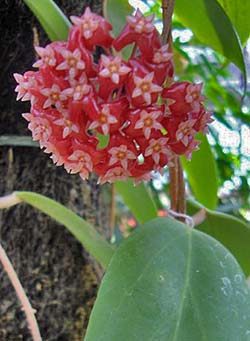
Actually it was not named after me but rather collectively for our Ilag family. The cited reason for this recognition can be read in the etymology published in the Asian Journal of Life Sciences.
I see it more as a tribute for the whole lineage. Having joined the Genographic project of IBM and National Geographic, I have come to discover that we belong to the haplogroup C3 primarily found among Mongolians.
Hoya ilagii is a wild species found in the island of Luzon which was an active trading partner of China during the Ming dynasty. Likely through maritime connections, trade along the Silk Road reached the Philippines and perhaps this is how my C3 ancestor reached Laguna my home province.
Being part of haplogroup C3 means the Ilag line shares a common ancient ancestor (thousands of years ago!) with Mongols like Genghis Khan and the founder of the Qing Dynasty. I was told our haplotype is very close to a “famous” Kazakh clan. Interestingly C3 is a very rare haplogroup in the Philippines. I would be happy to find other C3 types in the Philippines.
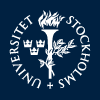
To read more about Dr. Ilag’s research:
Department of Analytical Chemistry, Stockholm University.
——
Copyright: Asian Scientist Magazine.
Disclaimer: This article does not necessarily reflect the views of AsianScientist or its staff.





